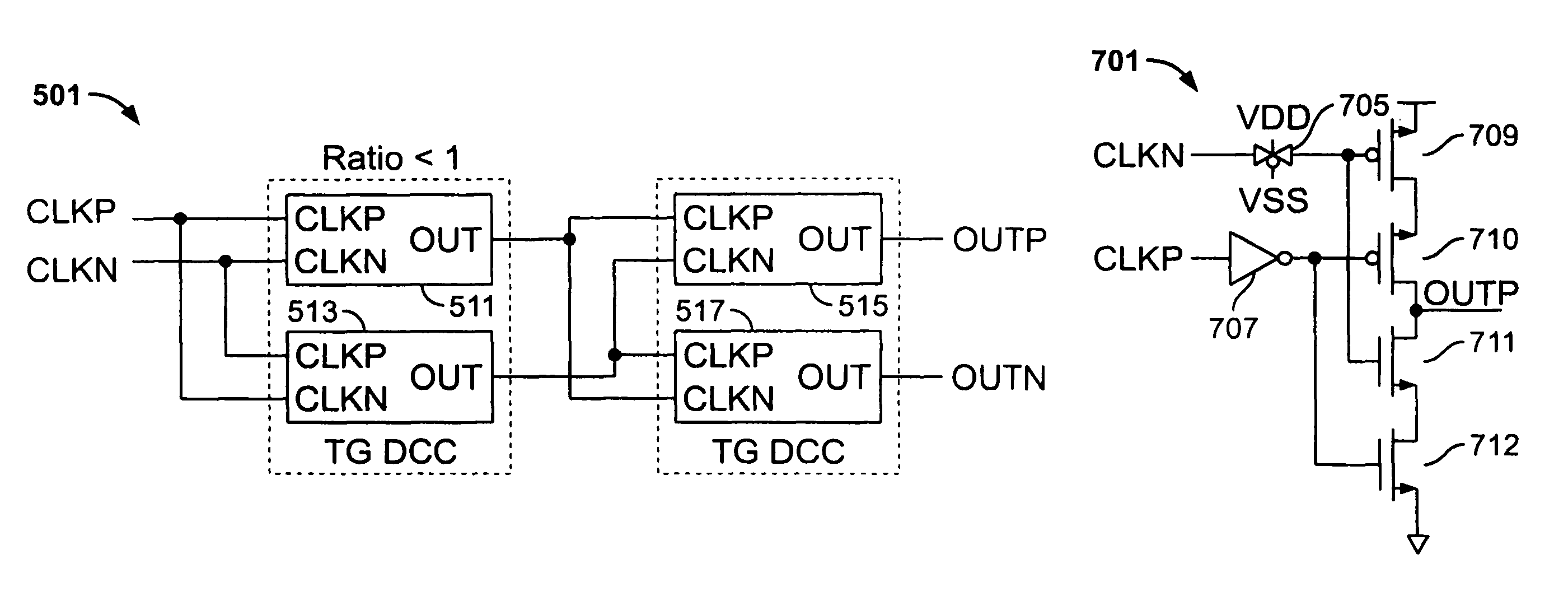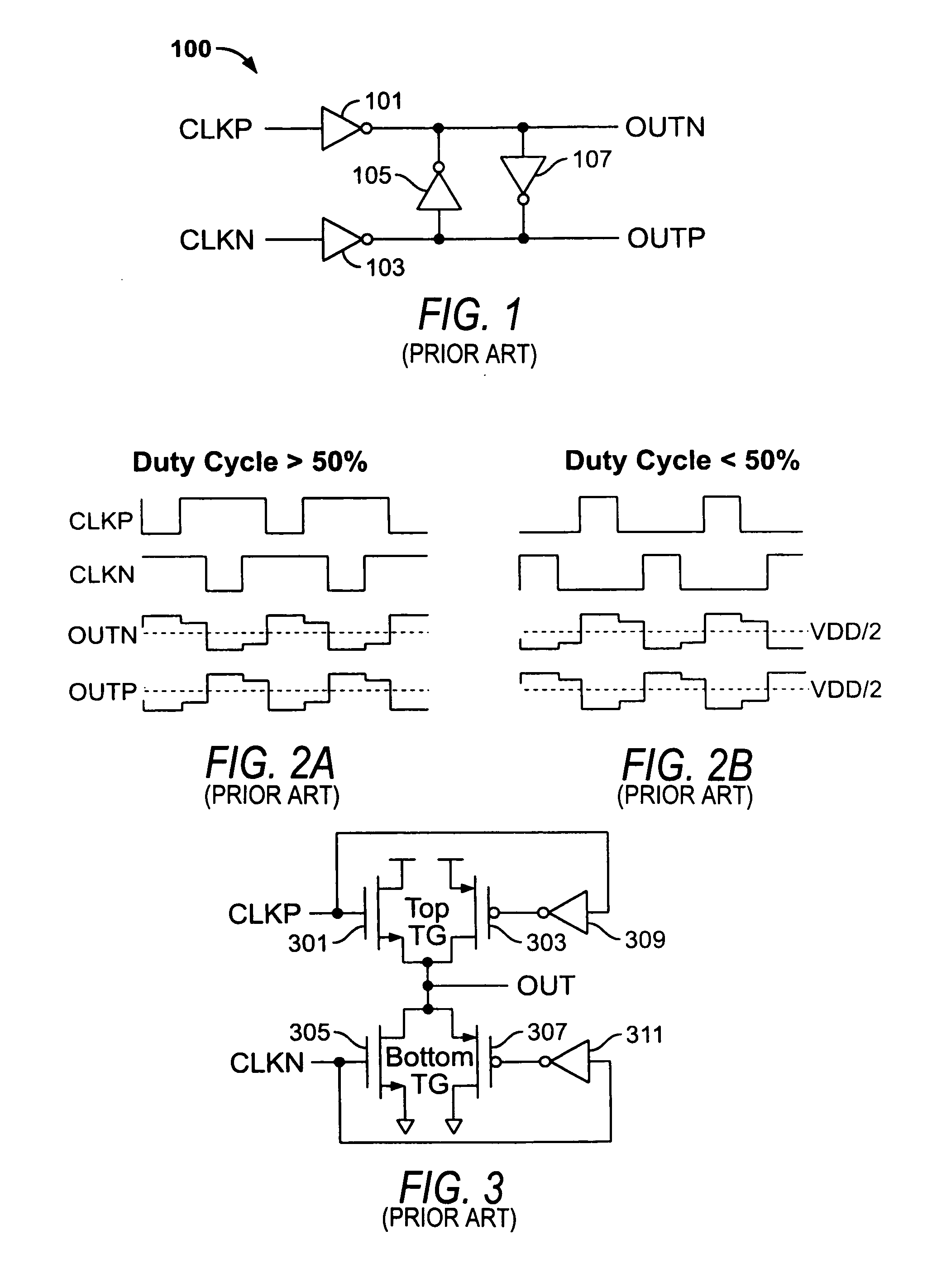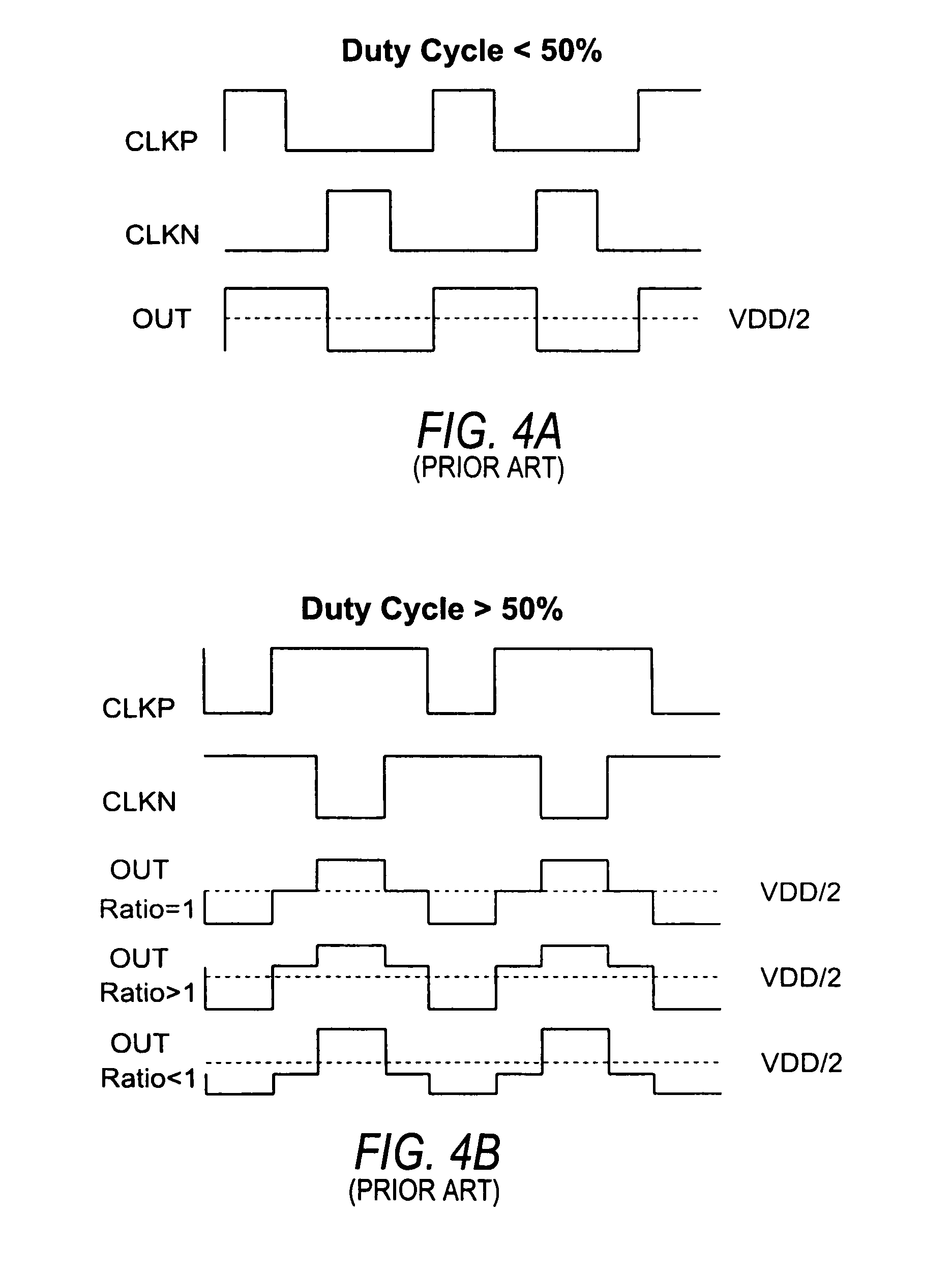Duty cycle correction methods and circuits
a duty cycle and circuit technology, applied in the direction of generating/distributing signals, pulse techniques, instruments, etc., can solve the problems of introducing stability problems in the circuit, circuits may function improperly, and circuits may be more complicated, so as to reduce the size and performance requirements of individual stages.
- Summary
- Abstract
- Description
- Claims
- Application Information
AI Technical Summary
Benefits of technology
Problems solved by technology
Method used
Image
Examples
Embodiment Construction
[0019]Duty cycle correction (DCC) circuitry may be used to correct the duty cycle of clock signals at any location in an integrated circuit. DCC circuitry may be especially effective in correcting the duty cycle of clock signals and improving circuit operation when located near high-speed circuit components that require precise timing and synchronization information. DCC circuitry may also be effective to improve the quality of clock signals which have traveled along long wires, traces, I / O pins, or other interconnection conductors, through clock processing circuitry, I / O circuitry, or other types of circuitry, or clock signals which may have suffered from deterioration, skew, or distortion.
[0020]The DCC circuitry and the circuitry controlled by the corrected clock may be implemented on one or more integrated circuits, on programmable logic devices, or in other types of circuitry. The corrected clock signal may be used to control the operation of one or more processors, digital sign...
PUM
 Login to View More
Login to View More Abstract
Description
Claims
Application Information
 Login to View More
Login to View More - R&D
- Intellectual Property
- Life Sciences
- Materials
- Tech Scout
- Unparalleled Data Quality
- Higher Quality Content
- 60% Fewer Hallucinations
Browse by: Latest US Patents, China's latest patents, Technical Efficacy Thesaurus, Application Domain, Technology Topic, Popular Technical Reports.
© 2025 PatSnap. All rights reserved.Legal|Privacy policy|Modern Slavery Act Transparency Statement|Sitemap|About US| Contact US: help@patsnap.com



